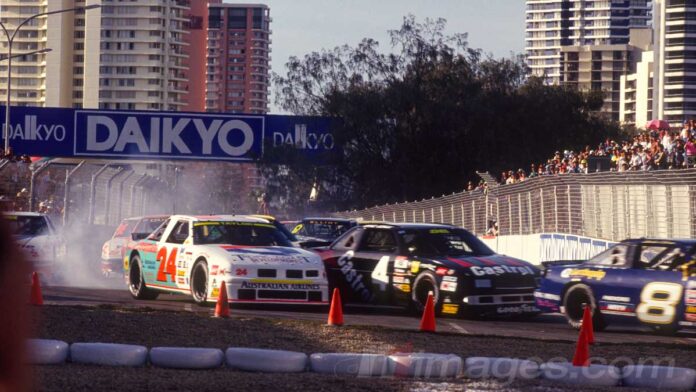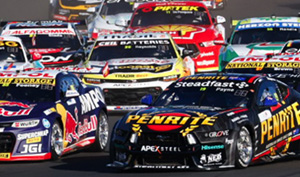SHANE van Gisbergen’s NASCAR Cup Series debut will come on a momentous weekend for stock car racing as its top-tier championship holds its first race on a street circuit.
The Chicago round marks the first time NASCAR’s premier class will hold a points-paying race on a track comprised fully of city streets, with the circuit first envisioned with online simulation partner iRacing before becoming a reality for the 2023 season.
However, it won’t be the first time that stock cars race on a circuit laid out on public roads – a fact Australian fans know all too well!
TV GUIDE: How and when to watch SVG’s NASCAR debut
DOWN UNDER: Ambrose’s NASCAR Cup race winner’s new home in Australia
SLEUTHING: The history of van Gisbergen’s NASCAR chassis
Ironically, we have IndyCar racing and the FIA to thank for our nation’s place in stock car street racing history.
The inaugural running of the Gold Coast IndyCar Grand Prix in 1991 was a political hot potato and took place in spite of threats from the FIA, which felt CART was moving in on their turf by racing outside of North America and threatened bans on any drivers or CAMS-aligned categories that took part in the event.
That left organisers short on potential support categories, with CAMS’ stance ruling out Group A touring cars or most other high-profile circuit racing categories of the era.
And that’s where Bob Jane’s NASCAR and AUSCAR categories came into the picture. Neither class operated under CAMS’ sanction and, with their clear roots in American racing, were a perfect fit for CART’s first race weekend down under.
The Surfers Paradise street races held points-paying rounds for the Australian NASCAR/Stock Car Championship from 1991 to 1995, and the races themselves were often eventful affairs.
Allan Grice dominated the inaugural event but came up agonisingly short of the overall victory and the $30,000 winner’s purse.
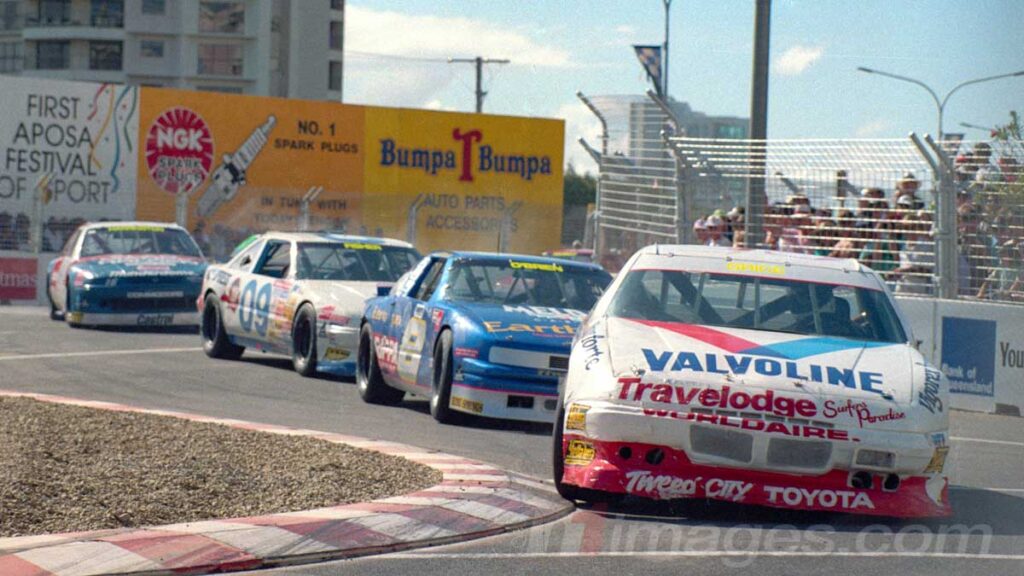
The two-time Bathurst 1000 winner took pole position but crashed at the end of qualifying, forcing an overnight rebuild of his brand-new Pontiac. He went on to win Saturday’s preliminary race, but it was Sunday’s race that had points and prizemoney on the line.
Grice led the first nine laps of the crash-strewn 10-lap affair, but picked up a puncture during a caution period brought out for Steve Cosson’s dramatic crash across Walter Giles’ parked car at the first chicane.
As Grice headed to the pits when racing resumed on the final lap, Charlie O’Brien took over the lead and claimed the win.
It had proven to be a lucrative weekend for O’Brien; he’d also won the AUSCAR race and pocketed a total of $45,000 for sweeping both!
His luck was out the following year, however, when rain and crashes meant only a handful of racing laps were completed across the weekend.
A huge field of 29 cars entered the 1992 event, but carnage at the first corner of the Saturday race forced a lengthy red flag period after a damaged car left an oil trail around the entire circuit. Racing resumed for a single lap before two more cars tangled coming onto the back straight, prompting another caution period, and the race was finally called with just six laps completed following another multi-car crash and oil slick at the first chicane.
O’Brien was declared the winner of the truncated Saturday race and led teammate Gregg Hansford when the main race got underway on Sunday, but a rain shower arrived just as the green flag waved and O’Brien spun the lead away at the second chicane.
That left Hansford leading when officials brought out the Pace Car at the end of the second lap and declared the race one lap later, putting a solitary NASCAR race win on the two and four-wheel legend’s CV.
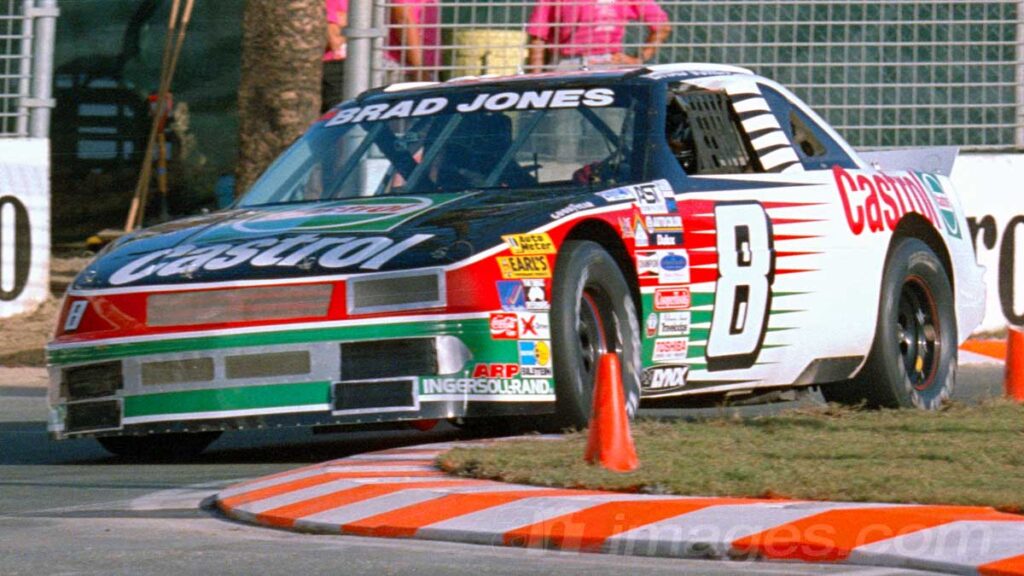
The carnage-filled start to the 1992 Saturday race led to changes for the stock cars’ remaining visits to the Gold Coast streets – namely that the start of the race wouldn’t mean the start of racing. The field would begin the race with a double-file rolling start, but would continue under yellow flag conditions in single-file for the first half of the opening lap; only once the field reached the back straight could they begin racing in earnest.
The 1993 event also marked the first appearance for the driver who’d go on to dominate the event: Jim Richards. O’Brien won Saturday’s opening 10-lapper but Richards took control early in Sunday’s 15-lapper and went on to take victory.
Richards was unbeaten throughout both the 1994 and 1995 events. The latter year marked the stock cars’ final Gold Coast race appearance, although they carried out demonstrations at the 1999 event.
More demonstration runs have occured in recent years with more modern machinery. Scott McLaughlin and Fabian Coulthard took an ex-Joey Logano Team Penske Ford Fusion out during the 2018 Gold Coast 600, Marcos Ambrose piloted a Mustang NASCAR at the 2019 Adelaide 500, and Jett Johnson drove a Chase Elliot-liveried Chevrolet SS NASCAR at this year’s Adelaide Motorsport Festival and will be behind the wheel of it again at next weekend’s Townsville 500.
While the category’s Gold Coast races are well remembered, it also made a pair of appearances at Albert Park in support of the Formula 1 Australian Grand Prix in 1999 and 2000. Richards swept all three races in the first visit, while Kim Jane clinched his fourth and final championship win with a clean-sweep of the 2000 event.
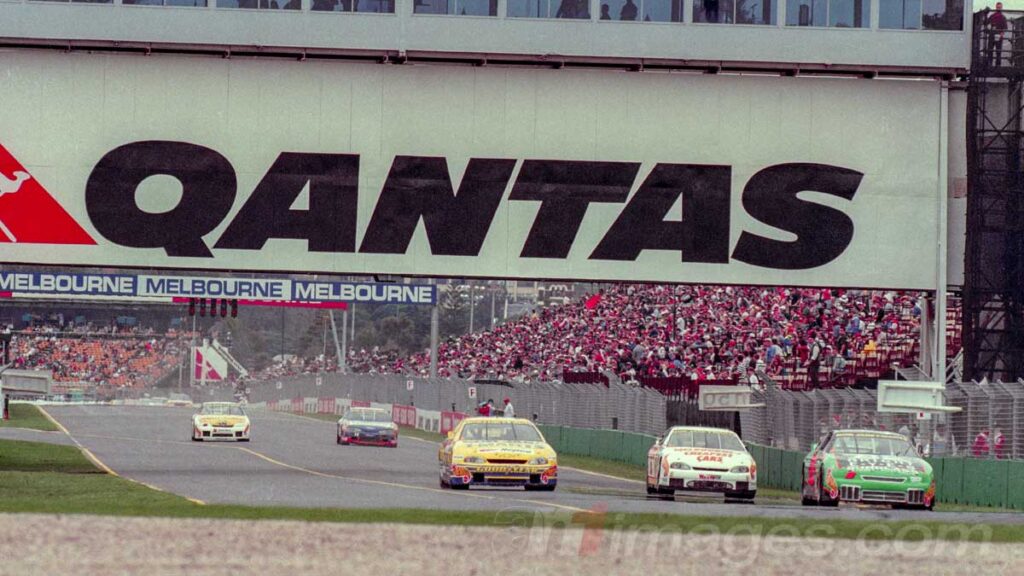
However, the Australian races were neither the first nor last time that stock cars raced on city streets prior to this weekend.
NASCAR’s Winston West division conducted four street races in Washington state during the late 1980s.
The Winston West series, now known as the ARCA Menards Series West, catered to stock car racers along America’s west coast. In addition to taking part in races at Riverside and Sonoma when the Cup Series came to town, Winston West racers also formed much of the field of the inaugural NASCAR race at Calder Park Thunderdome in 1988.
The category held its first street race two years prior in 1986, held on a 2.5km layout around the Tacoma Dome and was won by future NASCAR Hall of Fame inductee and Thunderdome starter Herschel McGriff.
A second street race was added in the city of Spokane a year later, but both races lasted just two editions before falling off the schedule.
The races were part of an overall boom in street circuit events across the United States during the decade, with CART, IMSA and Trans Am all following the Long Beach Grand Prix template to expand into new markets that didn’t have suitable permanent race circuits of their own.
It led NASCAR to develop its own bespoke chassis more suited to road racing. Known as the L-R car (Left-Right car), two prototypes were built in 1986 that were lighter and shorter than existing Cup Series machinery with an eye to creating a series that raced on road courses and street circuits.
The series never went ahead and the Cup Series instead limited its road-racing appearances to permanent circuits for the next few decades, but other levels of the sport continued to dabble with street circuits in the years since.
ARCA ran a single street circuit event in 1994 in Des Moines, Iowa, joining the bill for the final edition of the city’s Trans-Am Series event.
NASCAR’s Southwest Tour held a trio of street races in Los Angeles between 1998 and 2000, events that featured then-current and future Cup Series stars like Mark Martin, Ken Schrader, Kevin Harvick and Kurt Busch, plus road course ringer Boris Said.
The tight, one-mile circuit was laid out on the roads and carparks around the L.A. Memorial Coliseum, which nowadays hosts the season-opening Clash exhibition race on a temporary oval inside the stadium. NASCAR’s Canadian series is the sole stock car category to continue racing on street circuits in recent years, featuring at the long-running Trois-Rivières event as well as supporting the IndyCar Series in Toronto.


